Below the pleasant district of Denfert-Rochereau, with peaceful residential streets and lively Haussmann-style avenues, lie the disused quarries that became the Catacombs of Paris. I’d heard about them for a long time but had never dared visit them. Just before Halloween, I summoned all my courage and descended the stairs to the Empire of Death.
Initially, the Paris Catacombs, officially known as the municipal ossuary, were a section of the former underground quarries nestled in Paris’s 14th arrondissement. These quarries were interconnected through inspection galleries.
By the end of the 18th century, they underwent a profound transformation, becoming the municipal ossuary, hosting the remains of approximately six million individuals. (There are currently 10 million people living in the Paris region!)
These remains were gradually moved from various Parisian cemeteries until 1861, primarily due to public health concerns. Curiously, they acquired the somewhat misleading name ‘catacombs,’ drawing a parallel to the subterranean necropolises of ancient Rome despite never having officially served as burial grounds.
It’s possible to visit the long, gloomy tunnels lined with ancient skulls and bones on a Paris Catacombs Tour. This promises to be an eerie experience!
>> Get your ticket HERE to the Paris Catacombs!
The Catacombs of Paris: A Bit of History
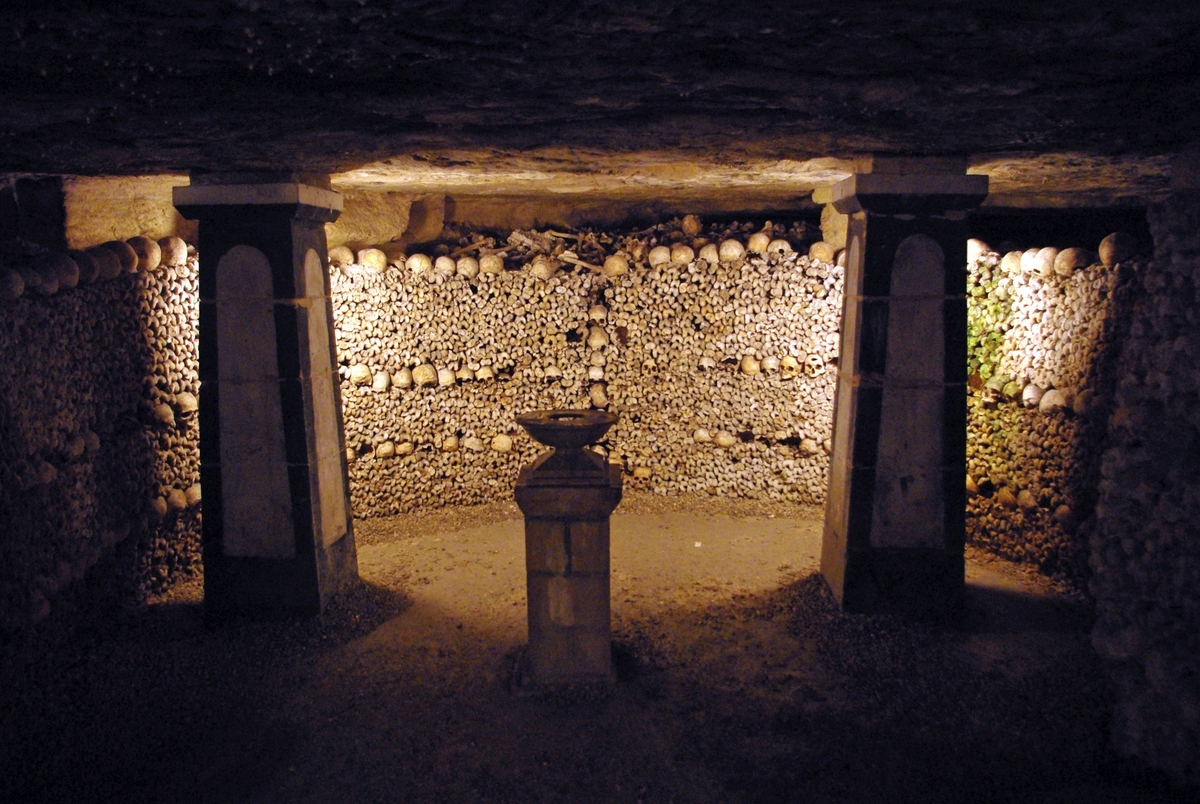
People have used the quarries since the Gallo-Roman era. They comprised a long series of tunnels excavated at the base of the three hills of the Left Bank: Montparnasse, Montrouge and Montsouris.
By the end of the 18th century, the overflowing cemeteries of Paris in the city centre posed serious hygiene and aesthetic problems. In 1785, the authorities transformed the abandoned quarries into underground ossuaries. It would then offer a more hygienic alternative to Paris’ cemeteries.
Between 1785 and 1810, several million skeletons were removed from the unsanitary cemeteries of Paris to the disused quarries. Many of the corpses came from the cemetery of Les Innocents. Next to Paris’ most significant marketplace of Les Halles, Les Innocents was Paris’ largest cemetery.
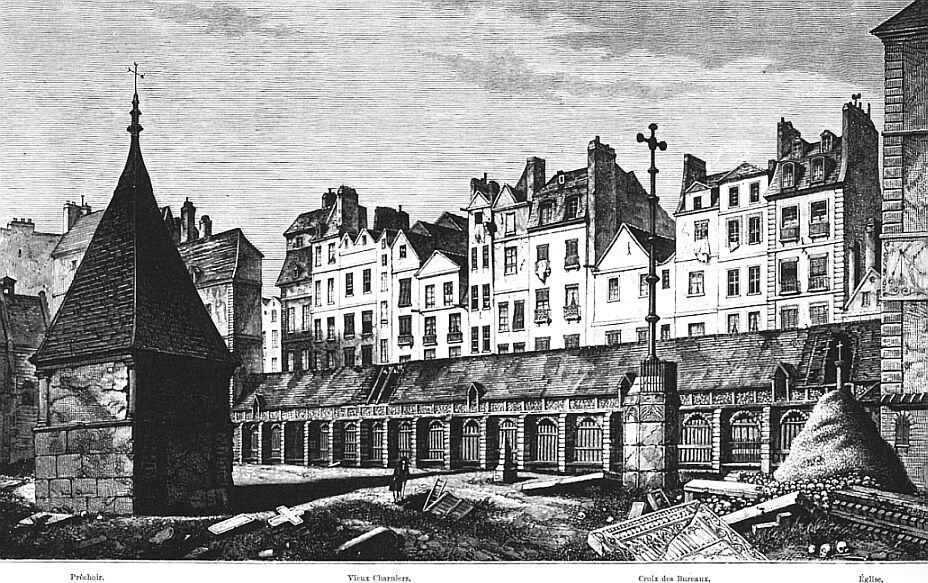
The monumental project required the transportation of the bones and rotting corpses across the city by night in huge carts. Therefore, it took two years to transfer them all from the cemetery of Les Innocents.
It is believed that the Catacombs now hold the remains of around six million Parisians.
Before the French Revolution, the Count of Artois (later King Charles X) threw wild parties in the Catacombs.
The first guided tours
Since their inception, the catacombs have sparked curiosity. However, it wasn’t until 1806 that the first public visits were arranged, though they remained infrequent and privileged.
Regular tours commenced in July 1809, with the head of the quarry service having a black line drawn on the ceiling to guide visitors.
In 1810 and 1811, decorative or artistic bone arrangements and stone plaques inscribed with famous quotes from sacred, literary, philosophical, or poetic texts were added. Their style reflected the taste of the First French Empire.
On May 16, 1814, Emperor Francis I of Austria, then residing in Paris as a conqueror, explored the Catacombs.
In 1833, religious authorities persuaded the police prefect, Rambuteau, to close the ossuary, deeming it a sacred place unsuitable for visits.
Despite numerous requests, it wasn’t until 1850 that four annual visits were resumed.
In 1860, Napoleon III descended into the Catacombs with his son, the Imperial Prince Louis Napoleon.
The same year, the pioneering aerial photographer Nadar became the first to capture images dedicated to the underground Paris, particularly the catacombs and sewers.
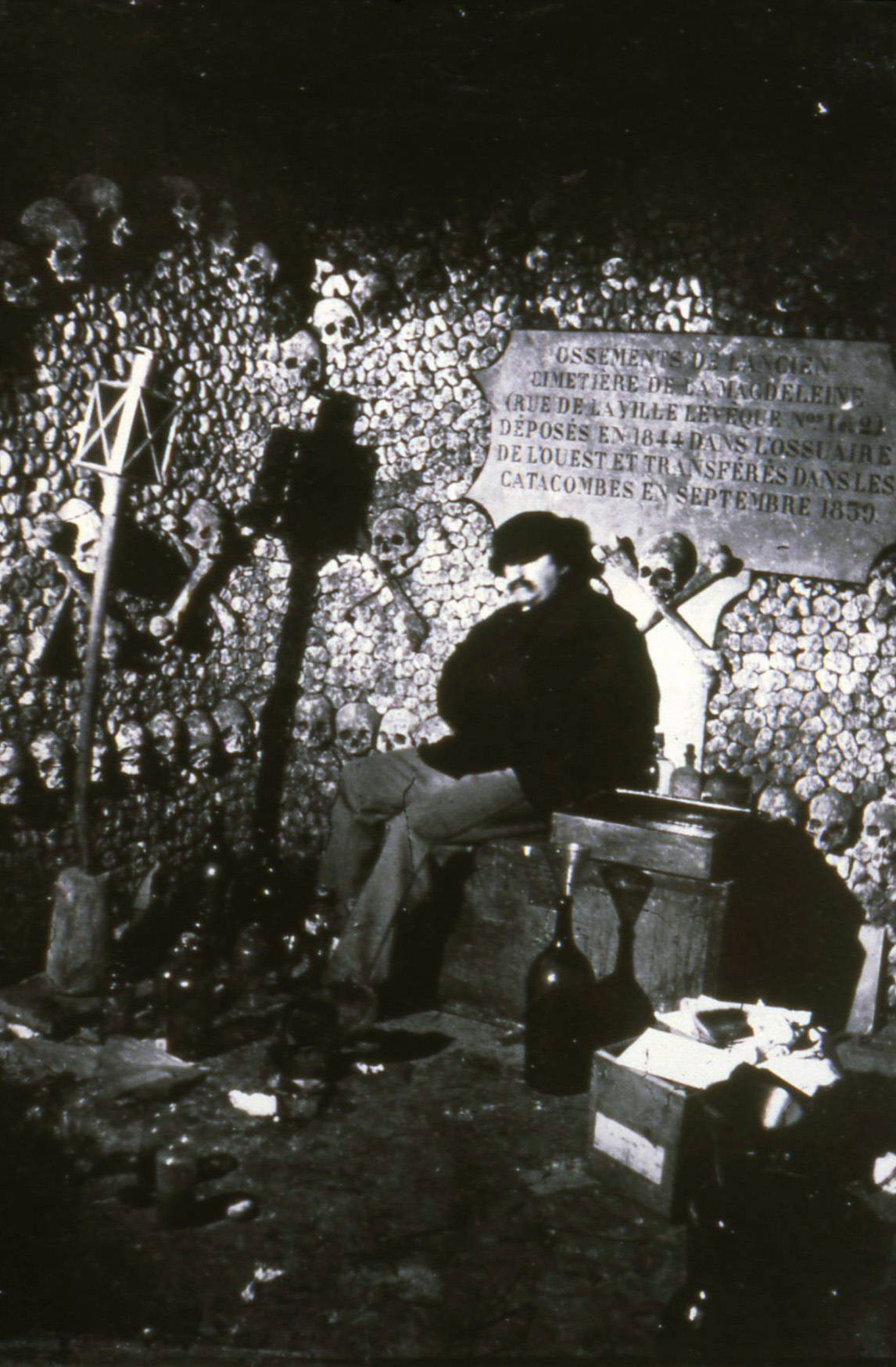
In 1867, King Oscar II of Sweden and German Chancellor Bismarck paid visits.
In May 1871, fleeing Communards sought refuge in several Parisian quarries, including the catacombs, where they faced ruthless suppression by Versailles troops.
During World War II, the Resistance used the tunnels and set up its headquarters there.
Until 1972, visitors relied on candles during tours, which have seen some changes since. Electric lighting was introduced in 1983, primarily to preserve skeletal remains.
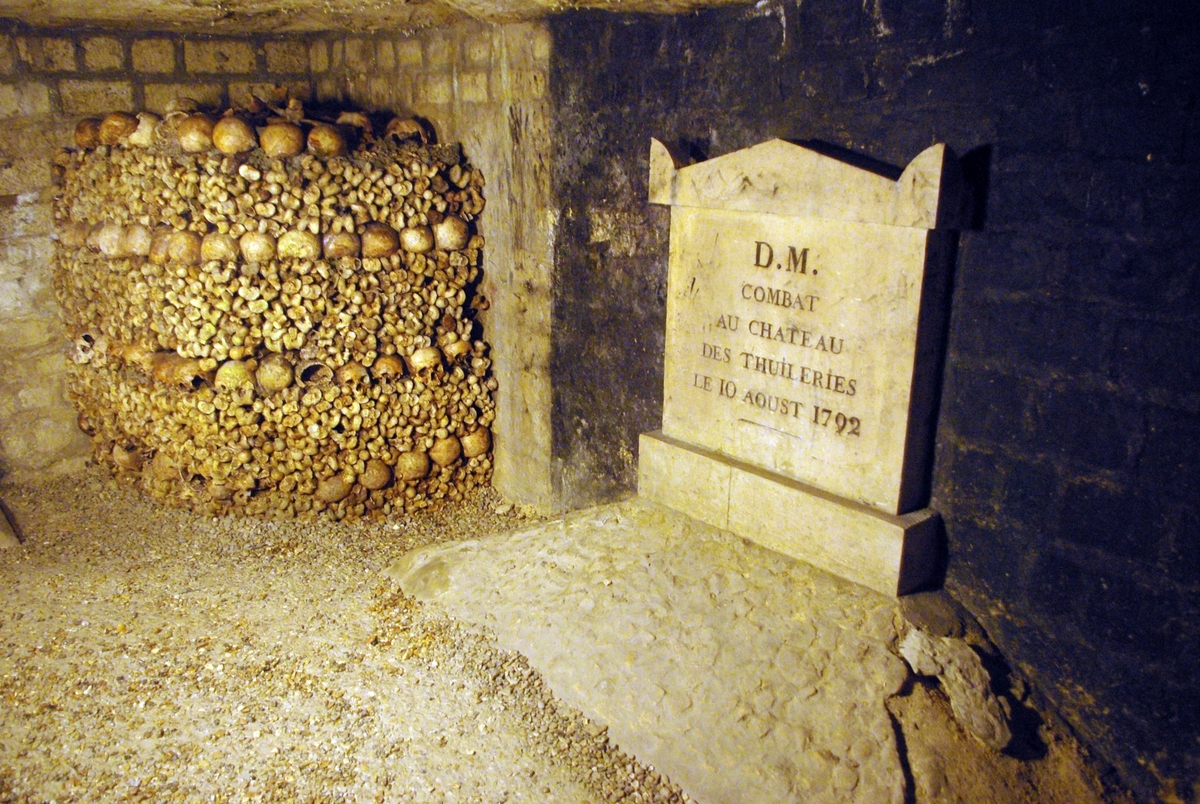
A Visit to the Catacombs
Where exactly is the entrance to the Catacombs? Look for a small, dark-green Belle-Époque-style pavilion in Place Denfert-Rochereau, formerly Place d’Enfer (Hell Square).
The first part of the visit involves going down a narrow spiral stone stairwell of 130 steps. Once at 20m below street level, visitors follow 1.5km of gloomy, dark and narrow passageways of mortared stone before getting to the actual ossuary.
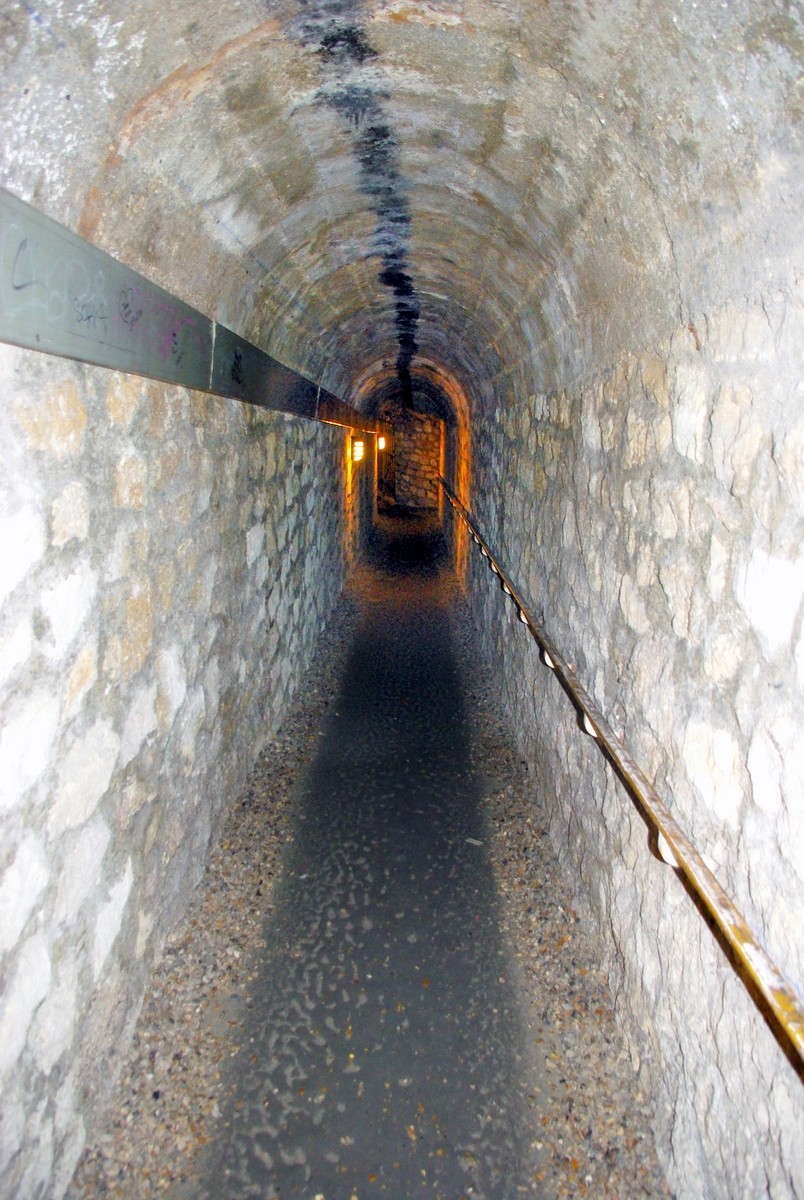
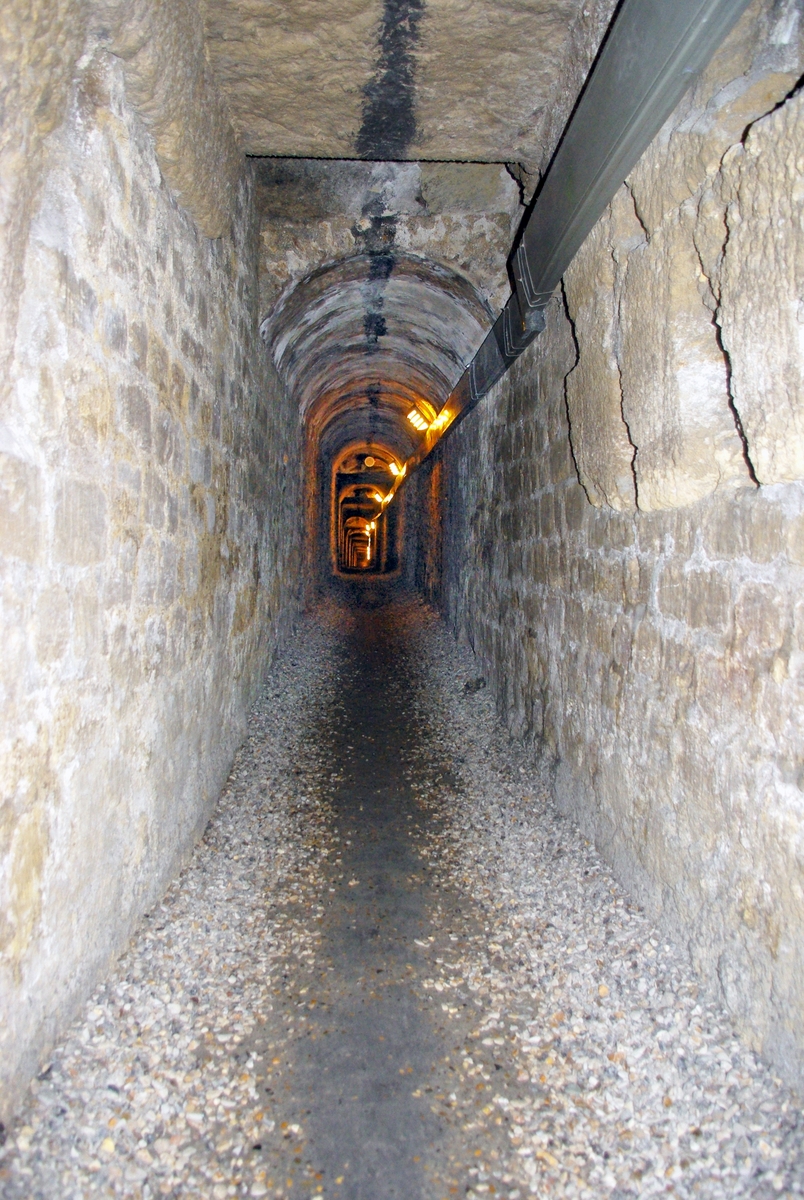
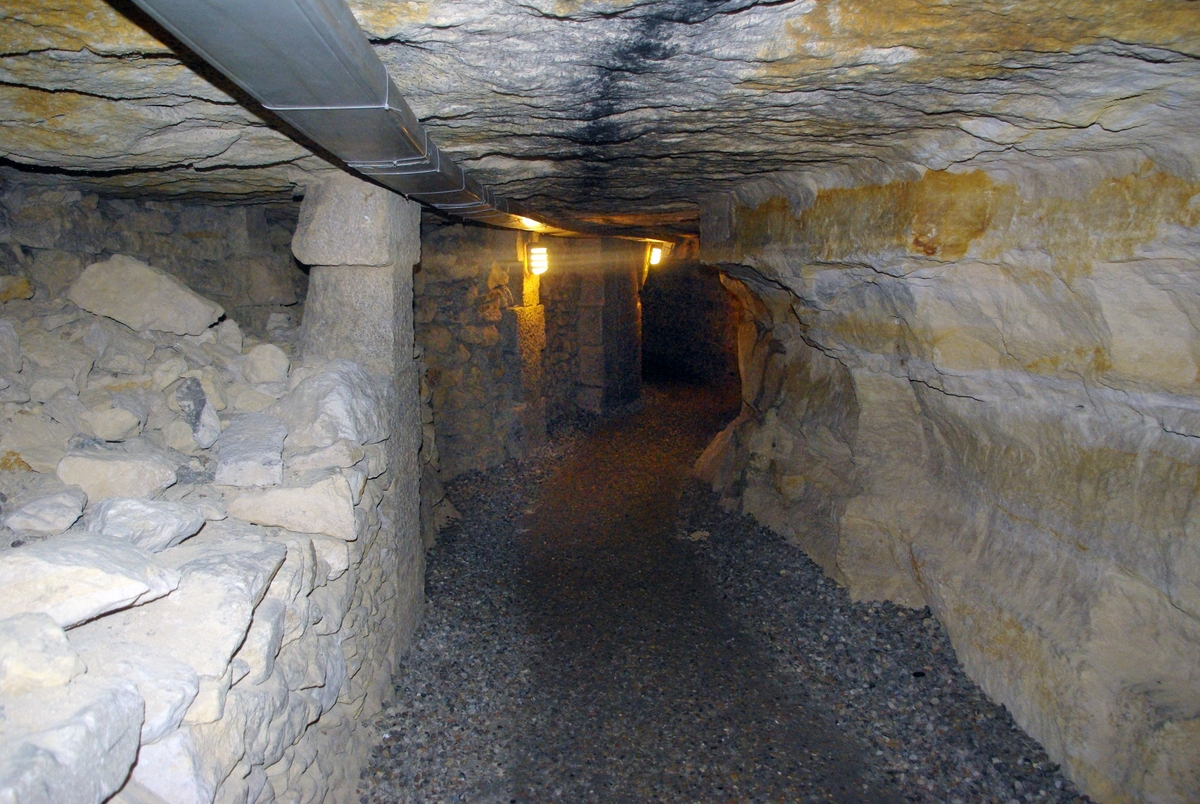
>> Get your ticket HERE to the Paris Catacombs!
A few interesting sites punctuate the walk, such as a model of France’s Port-Mahon fortress. It is the creation of a former Quarry Inspector at a time before the place became an ossuary (1777-1782).
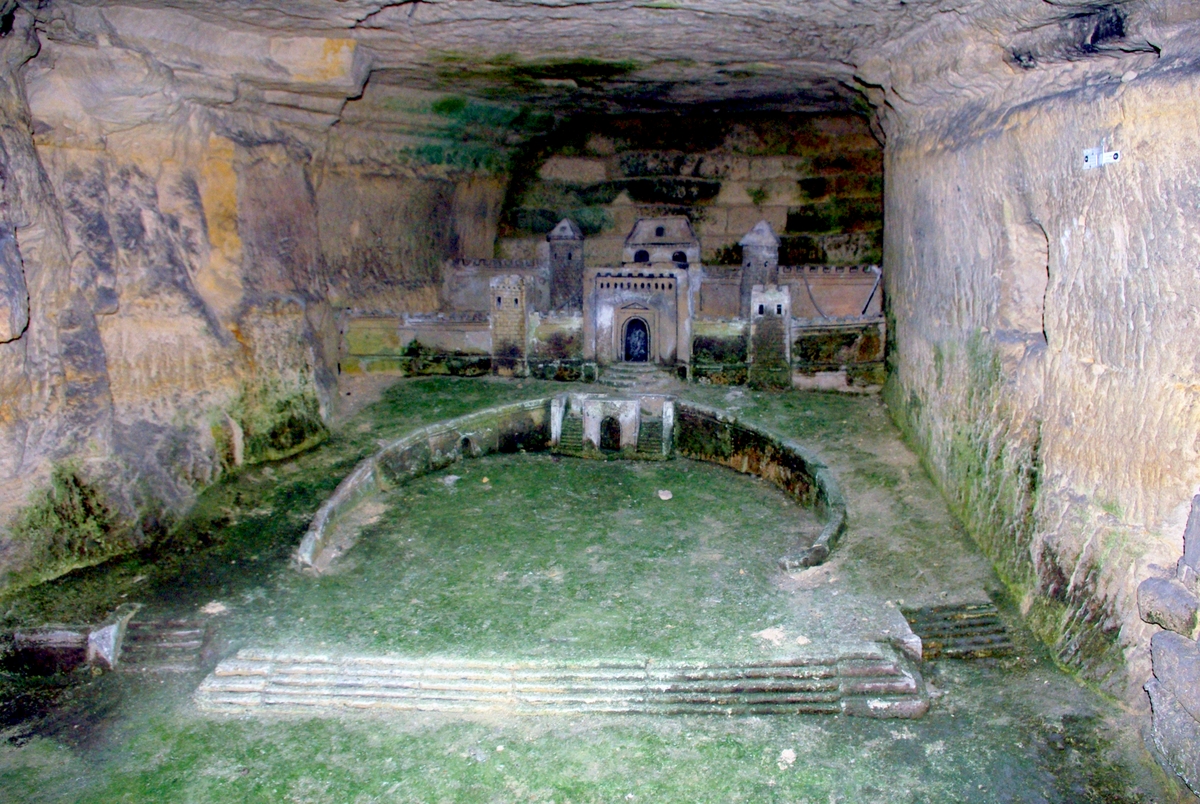
There is also a spring named ‘Bain de pieds des carriers’.
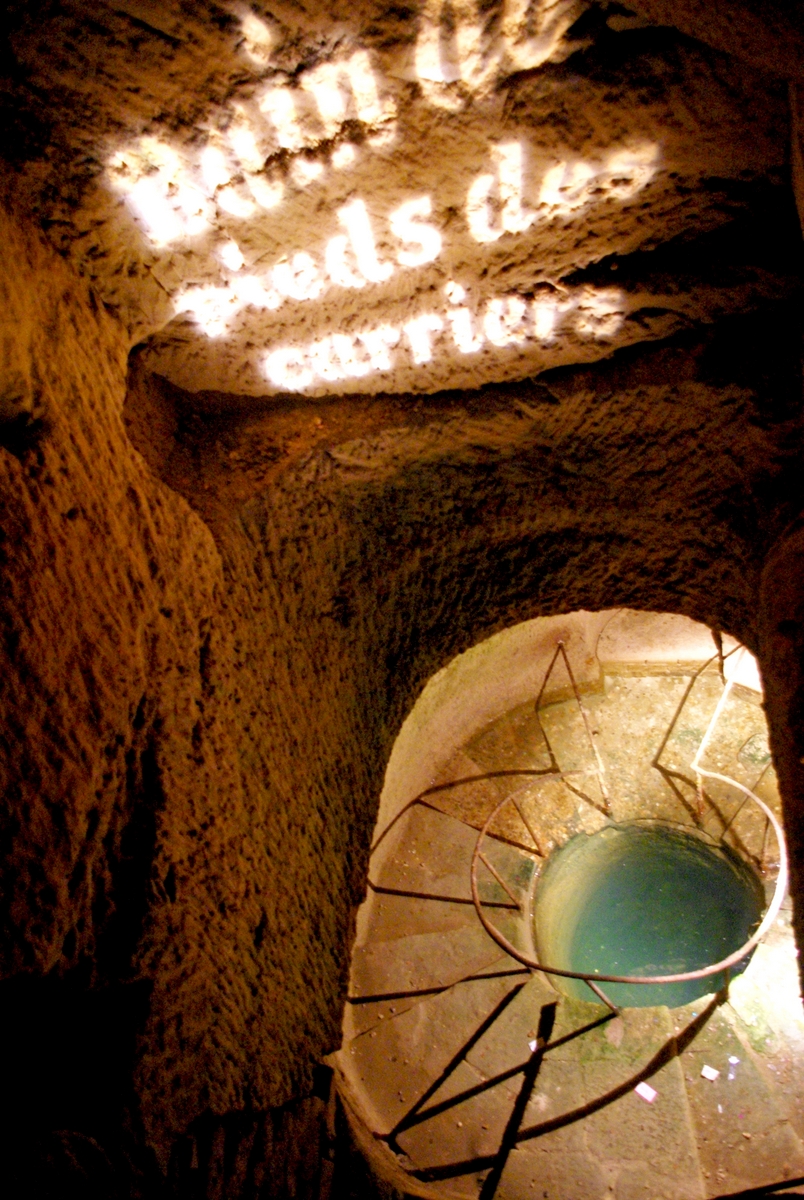
Then, the passageway goes up slightly at a monumental site called ‘Les doubles Carrières’, which precedes the ossuary.

The entrance to the ossuary
The surreal and chilling experience starts at the ossuary entry with two black pillars with white geometrical motifs.
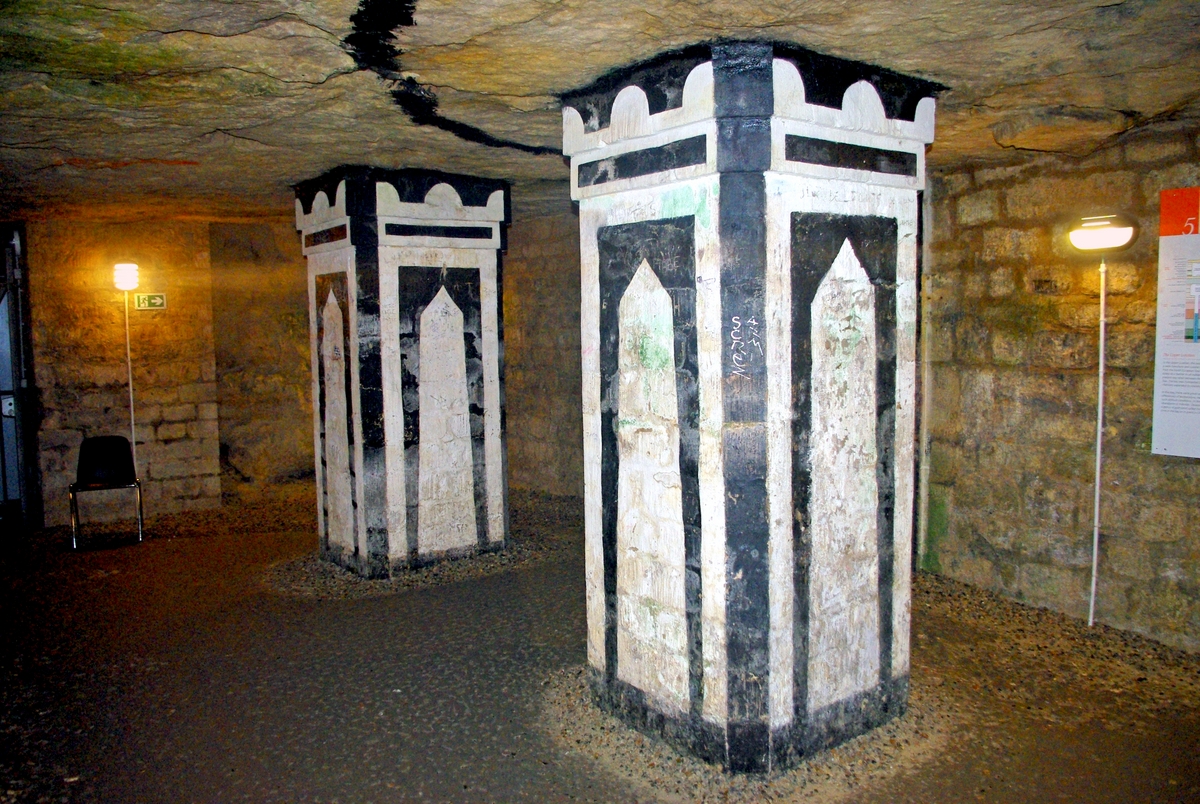
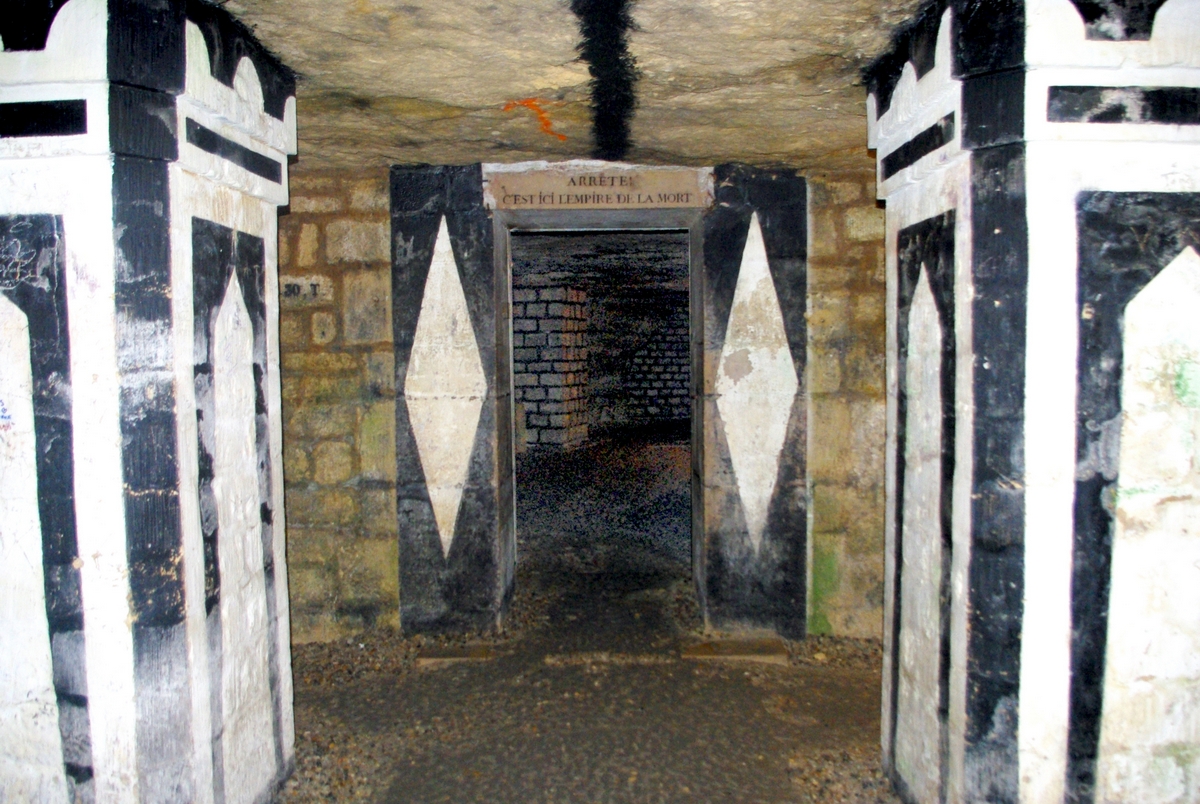
The lintel of the stone portal bears an alexandrine inscription by poet Jacques Delille:
“Arrête ! C’est ici l’empire de la Mort !”
(Stop! This is the Empire of Death!).
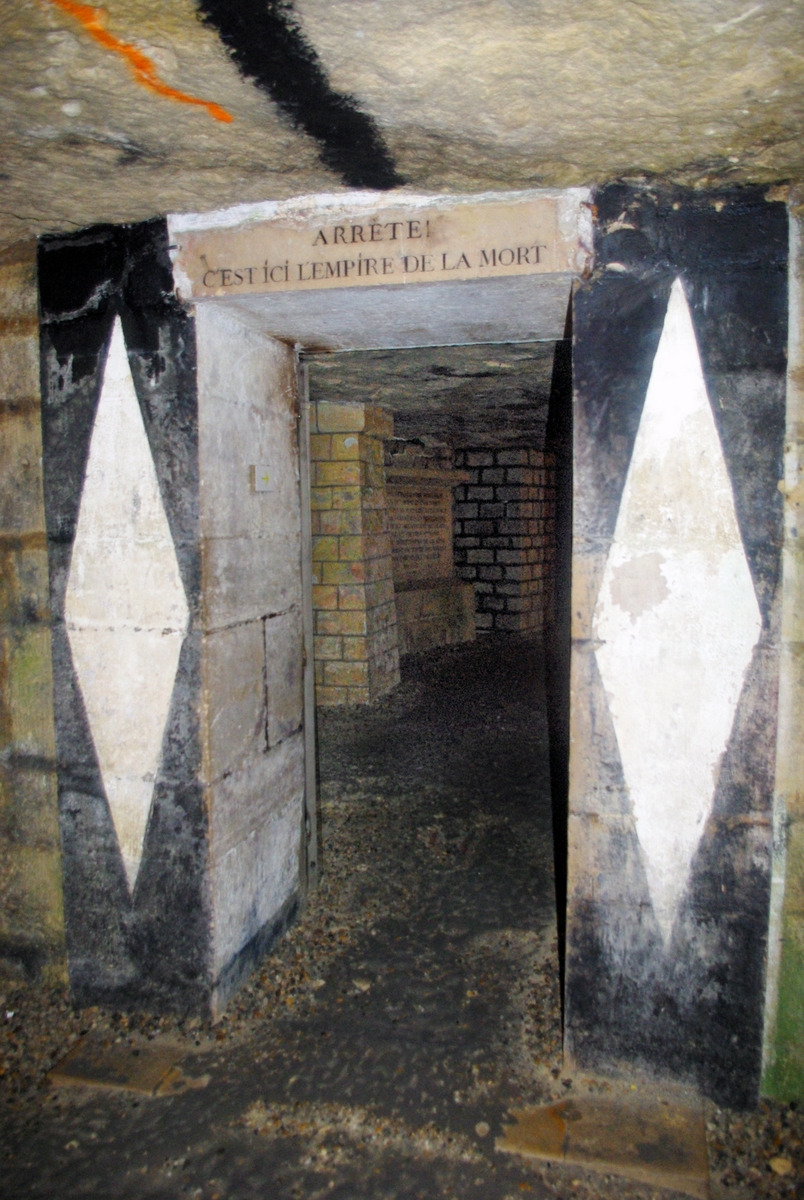
At the entrance hall, a monument commemorates the opening of the ossuary:
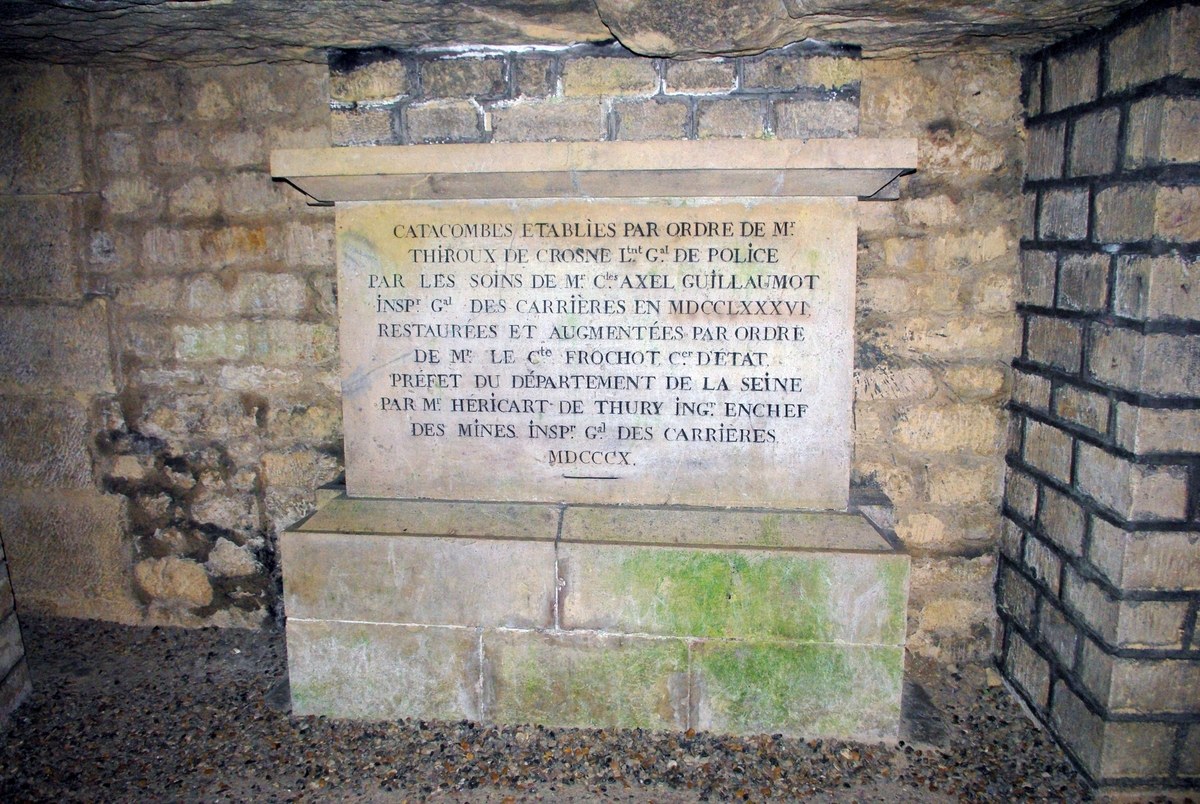
Beyond the gate lies the fascinating ossuary of the Catacombs of Paris. Over 800m and a surface area of 11,000 sq. m, the halls and caverns hold bones and skulls of millions of Parisians. They are neatly and carefully stacked along the walls.

Hollow-eyed skulls embedded in surrounding tibias and plaques carrying macabre quotations make the ossuary one of the most surprising sites in Paris.
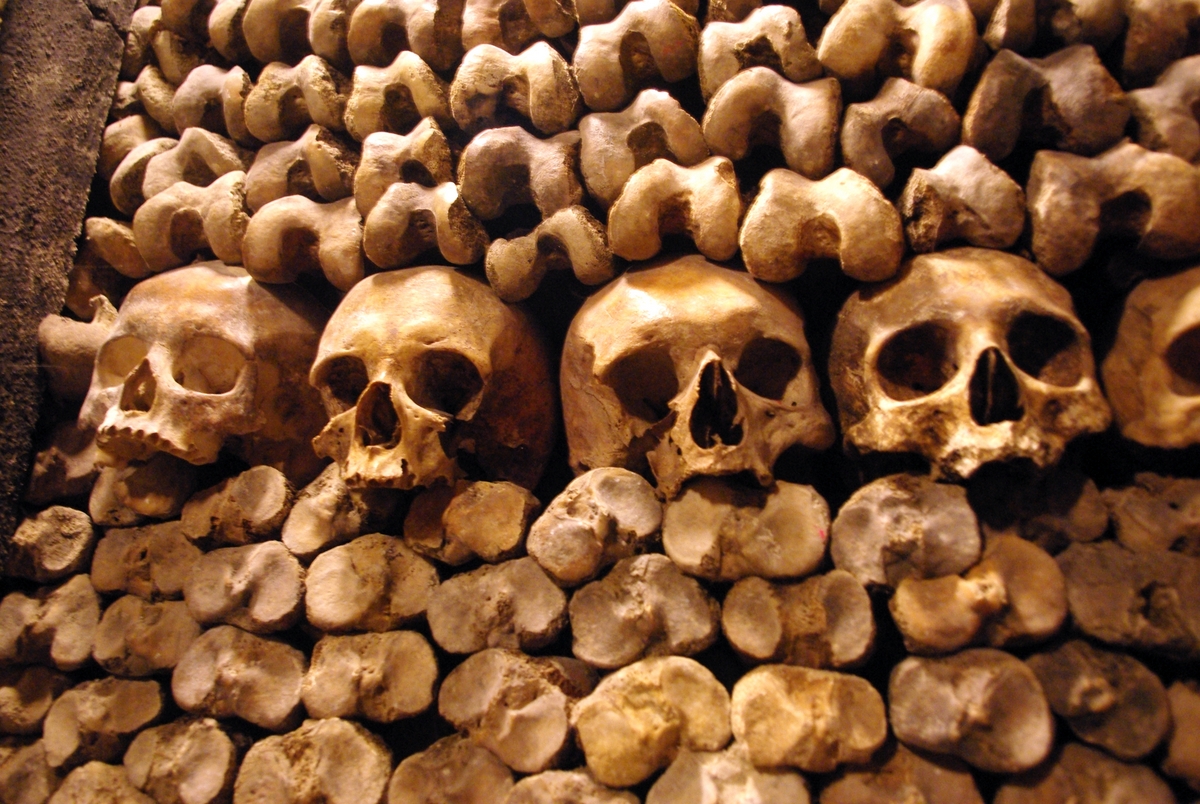
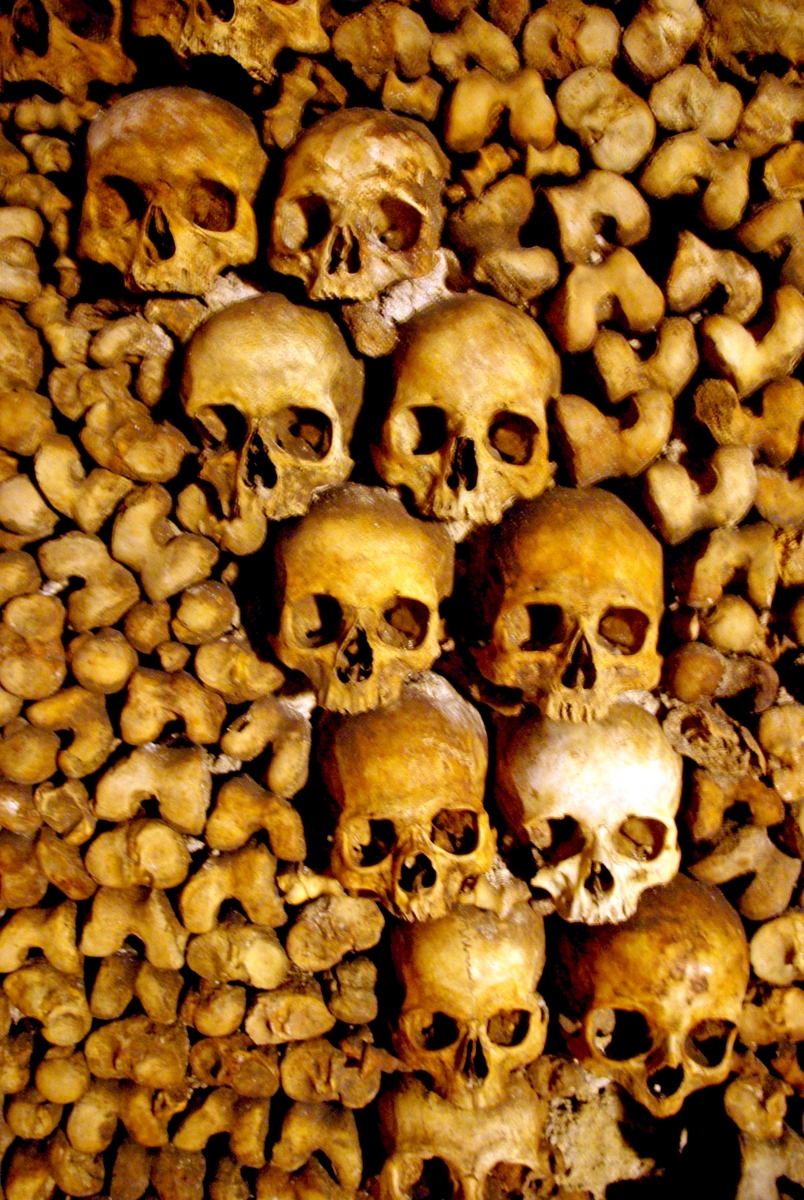
Some famous French people are resting in the Catacombs
As the bones came from several graveyards in Paris, it leaves no doubt that there would be the remains of many famous French people, including:
- writers François Rabelais (circa 1483/1494-1553), Jean de La Fontaine (1621-1698) and Charles Perrault (1628-1703),
- sculptor François Girardon (1628-1715),
- painter Simon Vouet (1590-1649),
- architects Salomon de Brosse (1571-1626), Claude Perrault (1613-1688) and Jules Hardouin-Mansart (1646-1708),
- composer Jean-Baptiste Lully (1632-1687),
- statesmen Nicolas Fouquet (1615-1680), Jean-Baptiste Colbert (1619-1683),
- and the Man in the Iron Mask (d. 1703).
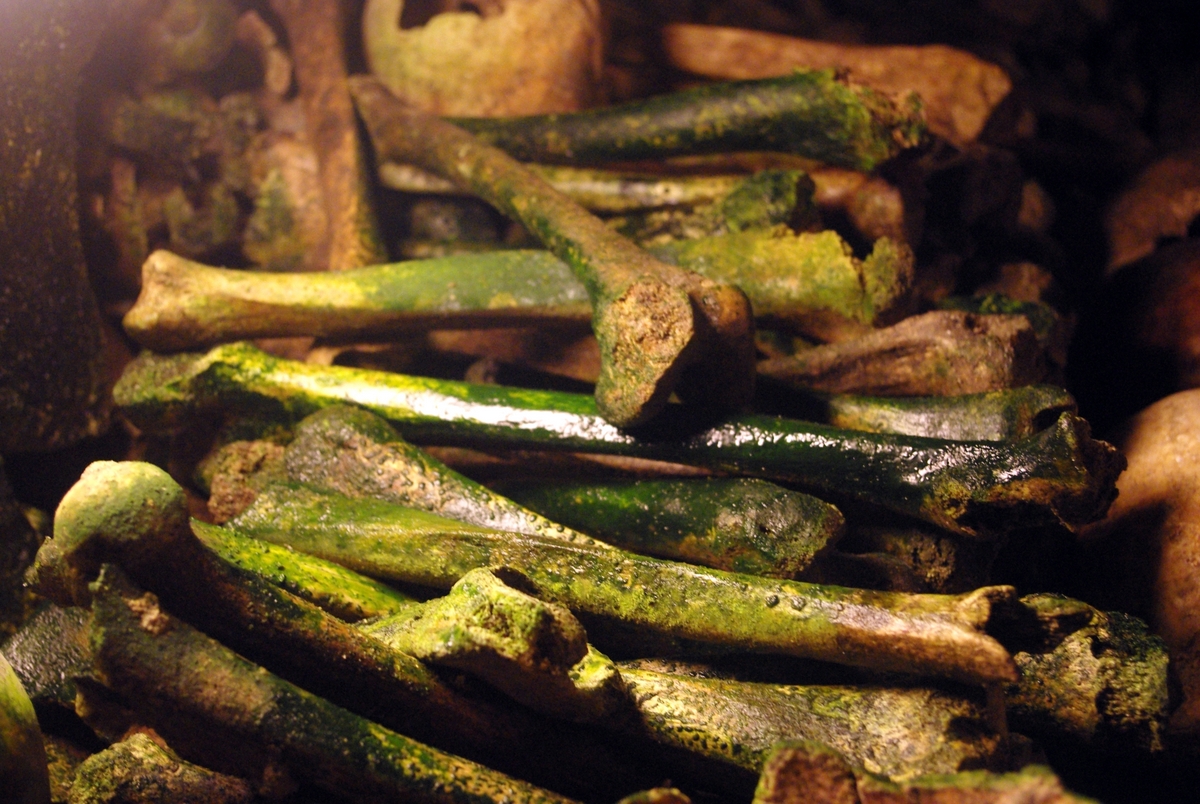
Also, those who died during the French Revolution were buried in the Catacombs. This includes:
- members of the Swiss Guard killed in the storming of the Tuileries Palace (10th August 1792) and
- victims of the September 1792 massacres.
The remains of those guillotined were transferred here from their original burial pits, including Lavoisier (1743-1794), Madame Elisabeth (1764-1794), Danton (1759-1794) and Robespierre (1758-1794).
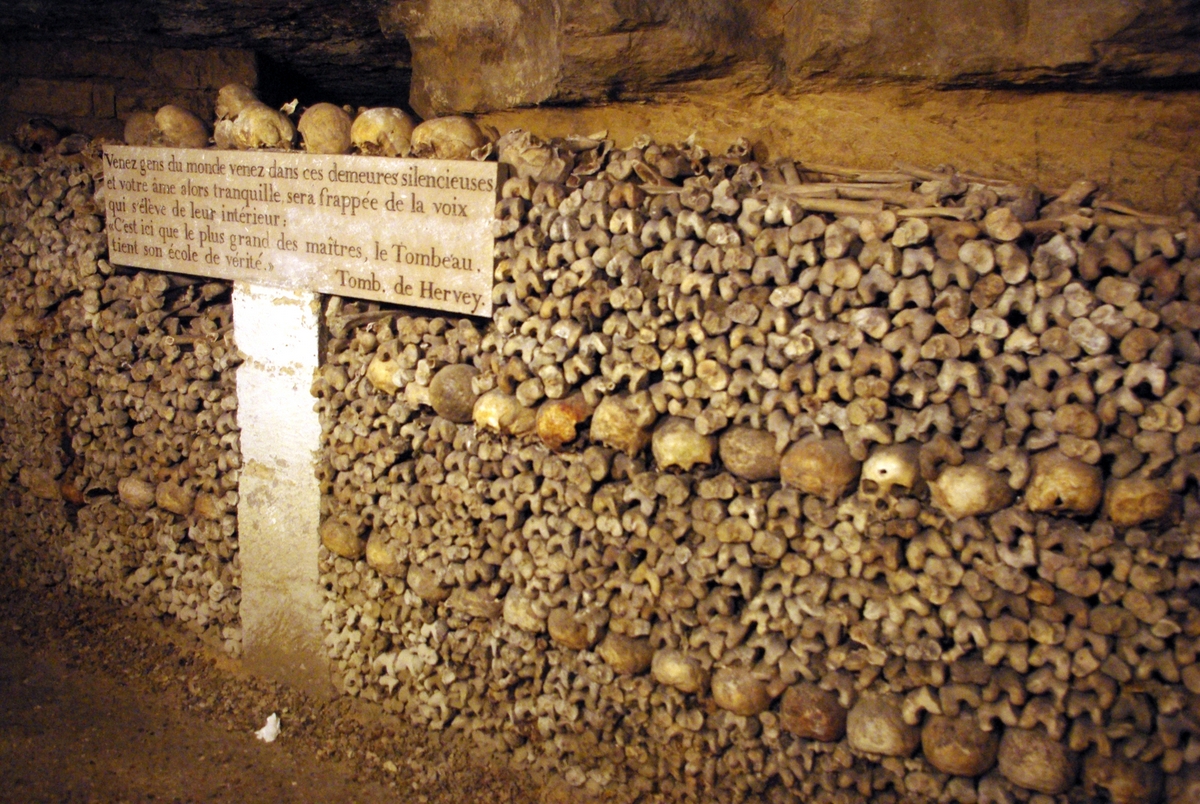
Moreover, an extensive series of maxims, poems and other sacred and profane messages in French and Latin force the visitors to reflect on death.
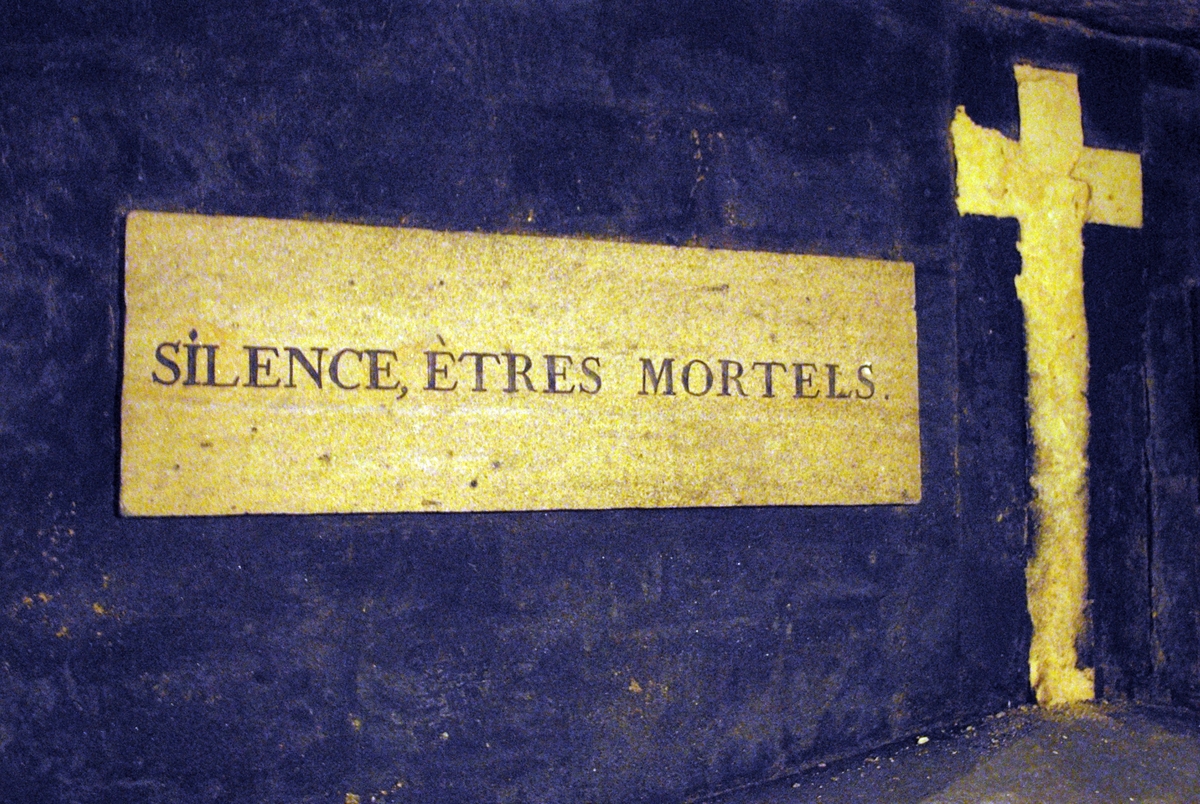
The last stage of the visit is the ascent of 83 steps up to the exit on rue Rémy Dumoncel (700m to the southwest of Place Denfert-Rochereau). When I visited, they also checked we hadn’t stolen any bones! On surfacing, it was nice to be in daylight again!

Prepare your visit to this [very] popular site!
The underground visit to the Catacombs of Paris takes approximately 45 minutes and can sometimes become claustrophobic. The Catacombs of Paris are experiencing a fast-growing influx of visitors (352,616 in 2014). To enjoy short queue times, I recommend arriving early or later in the day and avoiding weekends and school holidays. Only 200 people can visit the Catacombes at one time. The constant temperature in the Catacombs is approximately 14 degrees C.
However, the public visit to the Catacombs only shows a small part of the disused quarries (0.05% of the total surface). Rusty gates block the way to many more tunnels and caverns.
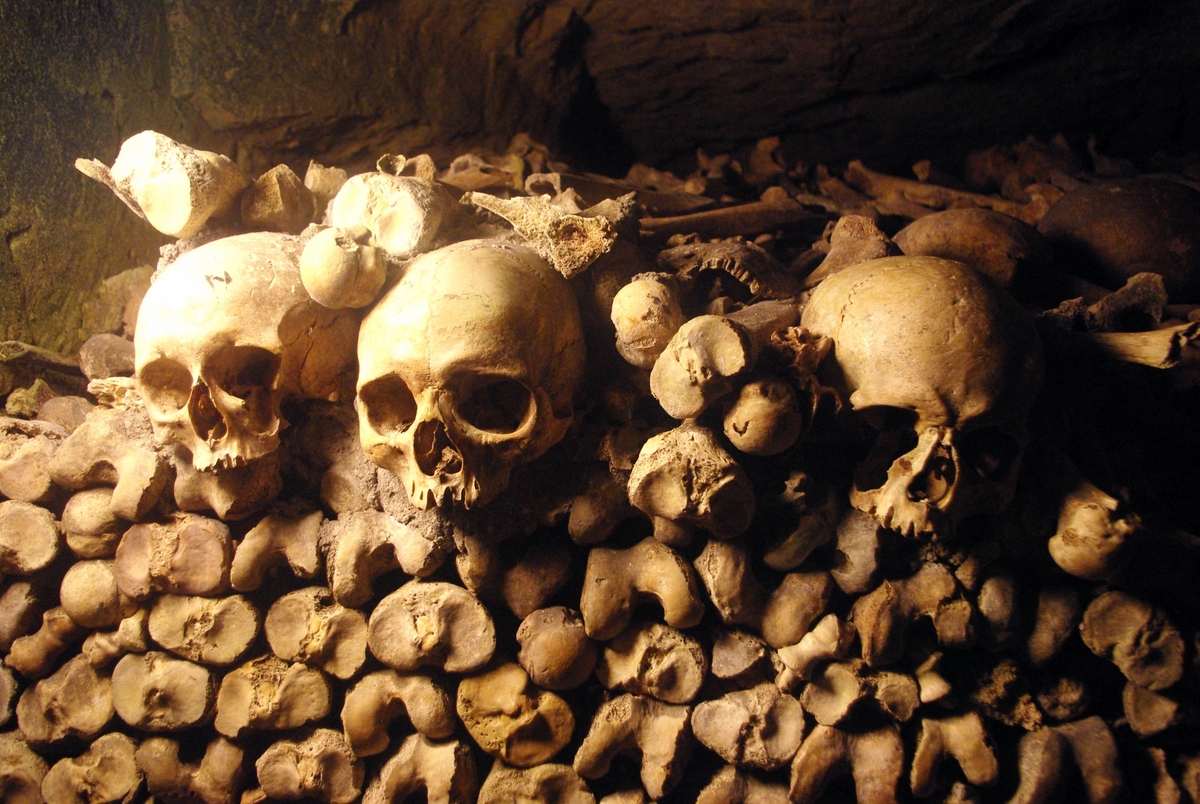
Pin it for later
If you like what you read, share this article on Facebook, X or Pinterest! 🙂
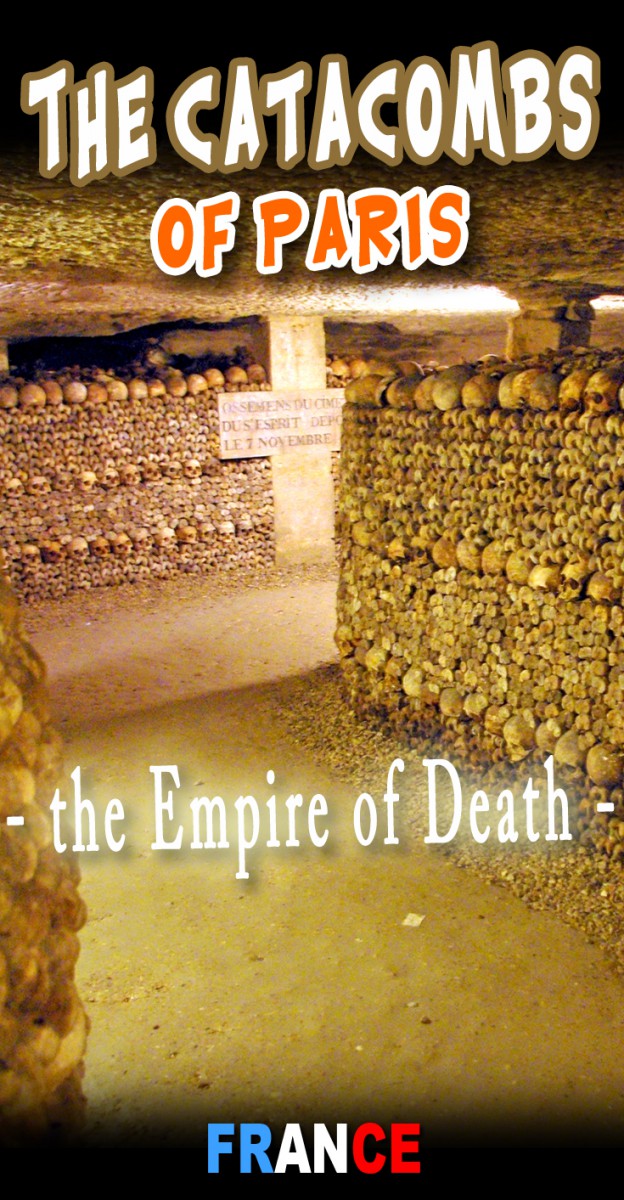
>> Get your ticket HERE to the Paris Catacombs!
To head down into the Catacombs of Paris and for more practical information, visit the official website.

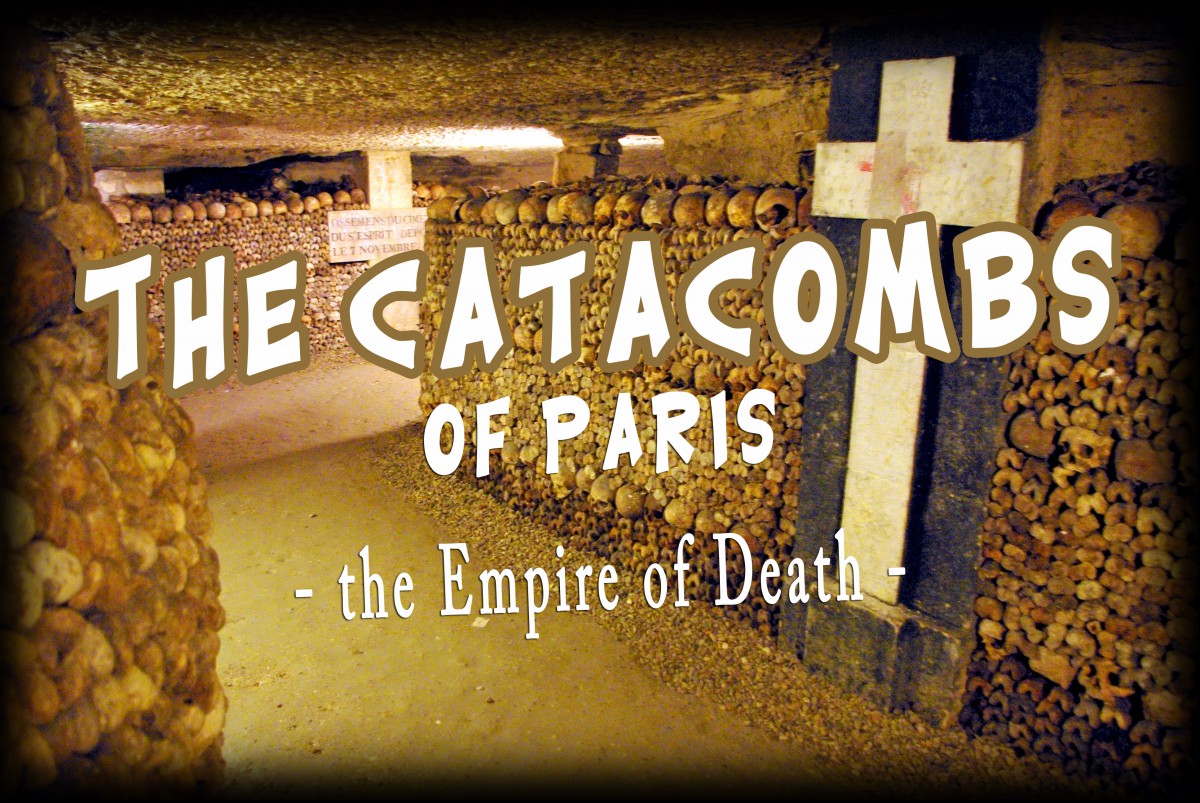



Hello Pierre,
A similar but much smaller "gloomy place" is the crypt of the Les Carmes church where rest the skulls and bones of the September Massacres' victims killed in the adjoining garden. The church is open for a guided tour once a week only.
Thanks for the tip! 👍